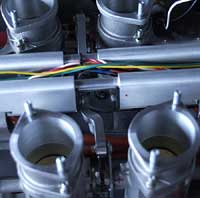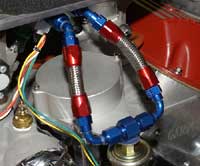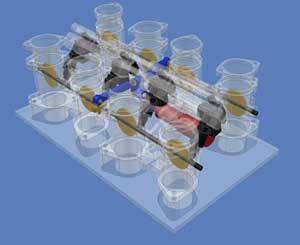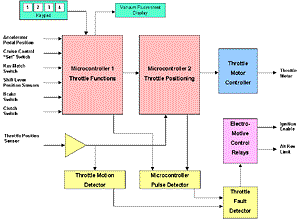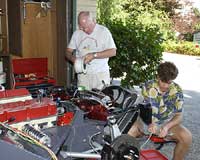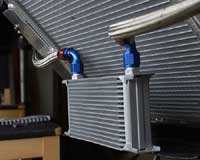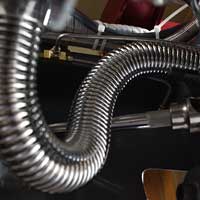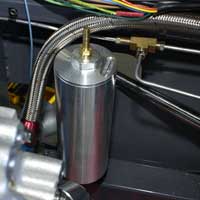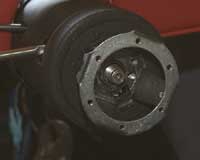Scott has been working a lot
on the electrical system and has wired up and tested the anti-roll bar
linear actuators, the radiator fan, the head lights (including high/low
beam switching), the fuel pump controller, dash lights and gauges, horn
(it's LOUD), and accusump. He also wired up the radio, but it doesn't seem
to be working yet - still debugging.
I
designed a circuit for the
LED bar graph to indicate the position of the linear actuators and Scott
did the PC layout. We
found an online
company that does inexpensive PC fabrication and should have the PC
board by the end of the week.
Scott's been
working on mechanical drawings for our throttle control while I've been
working on the control electronics. I'll post more details in a couple of
days.
July 19 - Scott spent the day at
Portland International Raceway taking the
Advanced
Driver Safety course at Prodrive. He's also signed up for their
Introduction to Road Racing course later this summer.

